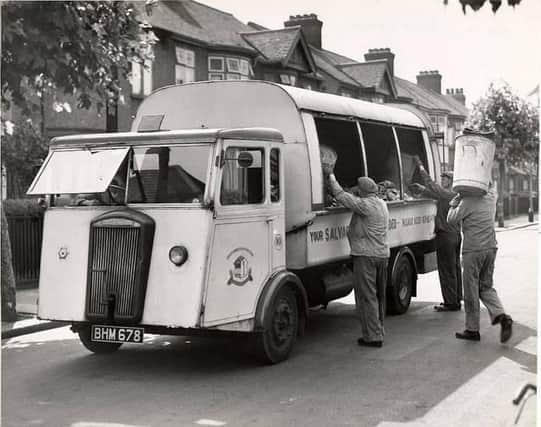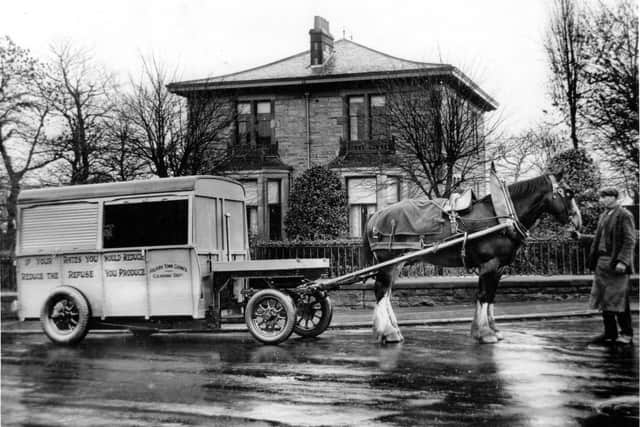Looking back with Ian Scott: Removing Falkirk's waste over the years


Only turkey bones will remain along with left over mince pies past their sell by date. There will be nothing for it but to fill up the green bin or the food caddy and wait for the guys from the council to take them all away to the tip or “book a slot” and cart it away yourself.
How different it was in the past when waste from kitchen, fireplace and even the toilet was simply dumped outside the door and left to rot or be flushed down the street by wind and rain. In Victorian Falkirk the accumulations of filth were blamed for all manner of diseases but people in power were reluctant to spent a few shillings to put things right. It’s true that there were official ‘scavengers’ with a contract from the Council to collect the ‘nuisances’ and cart them away to the countryside but by all accounts they did as little as they could get away with. However towards the end of the century new pressure to improve sanitation and health brought change and the carts of the scavengers (or ‘scaffies’) gave way to a more regular system of collection. In the 1920s and 30s the open horse-drawn lorries were gradually replaced by motor vehicles with closed sides in an attempt to keep the contents . . . . and the smell in.
Advertisement
Hide AdAdvertisement
Hide AdDuring the second world war there were severe shortages of many items and the idea of recycling materials and making the most of the left over food was given official support and information caravans came to town to press home the message.


As a child in the 50s I remember food waste being collected in little ‘brock pails’ with funny lids to ‘feed the pigs’ though where exactly they were was not too clear. Most of the rest of the weekly waste was ashes from the coal fires which burned in every grate in the town. These went into big metal dustbins with huge round lids which made great shields for boys fighting battles against the enemy from Summerford or Camelon. The dustbin men came round each week wearing leather aprons and gloves and lifted the huge bins over their heads and shook the contents into their wagons sending showers of ash around the neighbourhood. We also had visits from rag and bone men with their horse drawn carts offering a few pennies or cheap toys for bags of old clothes. If the horses were kind enough to leave a wee present on the street then we were sent out with a shovel to collect the goodies which made the roses grow!
The clean air acts of the 1950s changed everything. The ashes disappeared but were soon replaced by the products of the new throw-away age. Most foodstuffs had come unpackaged including bread, meat, fruit and vegetables now everything was wrapped often twice or more and returnable glass milk bottles vanished. Great mobile grinding machines replaced the old bucket lorries and after a spell of black plastic bags the multicoloured wheelie bins of today arrived.
A far cry from the dirty unhealthy middens that once stood before every door in town.